Let's speed up 3G modem using external antenna
All 3G modems have internal antennas. In some models there are even two or three of them. Nobody thinks about these antennas while the modem easily pumps heels or two Mbps through itself. But if the speed is only a few kilobits and if the computer with the modem has already visited all corners of the room in search of at least some signal, but didn’t find it, then the first thing that can help is an external antenna.
Some modems have a special connector for connecting an external antenna. Cons of this method:
- it is necessary to find an adapter cable with a suitable connector specifically for this modem;
- on the connector there will be excess signal loss;
- the connector is very fragile, and a pair of inaccurate connections can break it.
Of the advantages of such a connector - only its presence.
Many models of modems do not have such a connector. Just in time for such a modem, we will connect an external antenna. To do this, the tools will require: a screwdriver, a soldering iron, a sharp knife. As well as the ability to solder or extra money on a new modem.
So, our patient is a 3G modem Huawei E171from MTS:
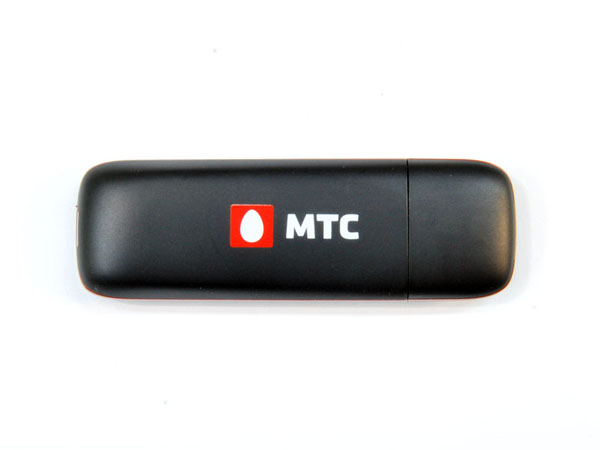
Carefully open the case and remove the modem from it. Here is its other side, (but it’s not interesting to us).
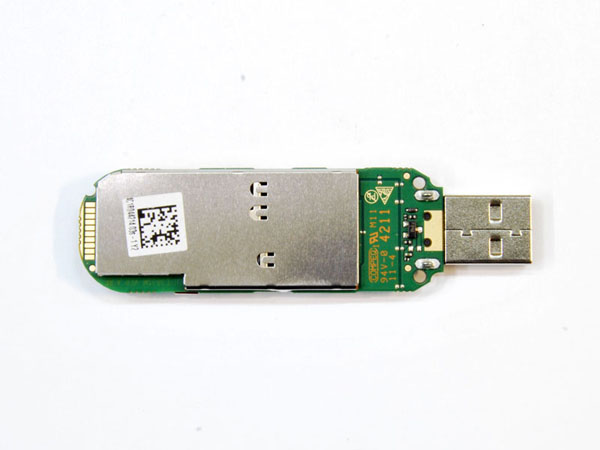
On the front side there are: a module for a memory card, contacts for a SIM card, a radio module under the cover, a connector, an internal antenna and a USB output.
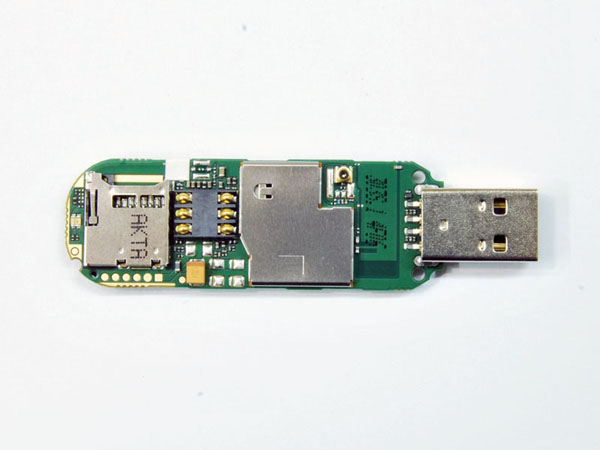
Interestingly, this connector is not available without disassembling the case, that is, almost all owners of this modem do not even suspect about this connector. Let it remain in place, we do not need it and do not interfere at all. And the internal antenna bothers us:

The antenna is etched right on the board, and we need to turn it off. To do this, first bite the SMD capacitor, designed for resonant matching of the antenna. Then a small cutter, clamped into the drill, do propyl on the antenna, leaving only a small platform for the soldering of the cable. The cut is done shallowly, as the PCB is multi-layered. We call the tester, whether the “amputation” was successful and whether there is no short-circuit between the cable soldering area and the cut antenna. By the way, sometimes this site can have a short circuit to the ground - these are the architectural features of some modems. If we did not cut off the internal antenna, then after connecting the external antenna, the signal would be divided between them, a mismatch would have occurred and nothing would have happened.

I wonder if there is still a chance to return this modem under warranty?
It should be noted that in some modems the internal antenna is made in the form of a cap with radiating elements. This cap is easily torn off the board, so you don’t have to cut anything.
After “amputation”, we take a piece of coaxial cable RG174, resistance 50 Ohm, 15 cm long (no longer necessary, because there is a large signal loss on this cable), F-connector and “tulip” connector. You can find all this in the radio parts store.
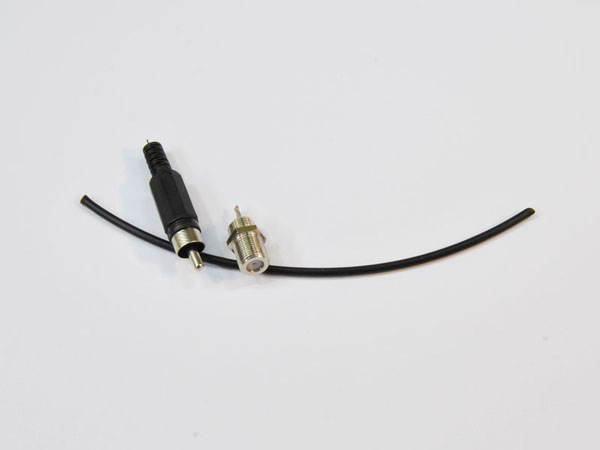
With the "tulip" we twist the cap, throw the rest. We clean the cable.
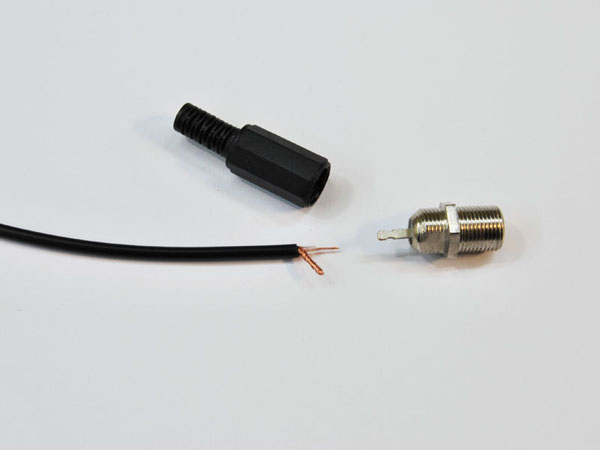
We solder the core to the central terminal of the F connector, the braid on its ground, put the cap on the connector.
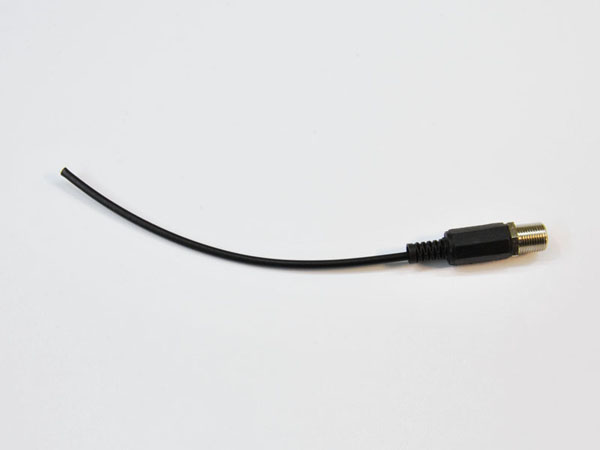
Carefully measure and drill a hole in one of the halves of the body. Thread the cable through this hole.
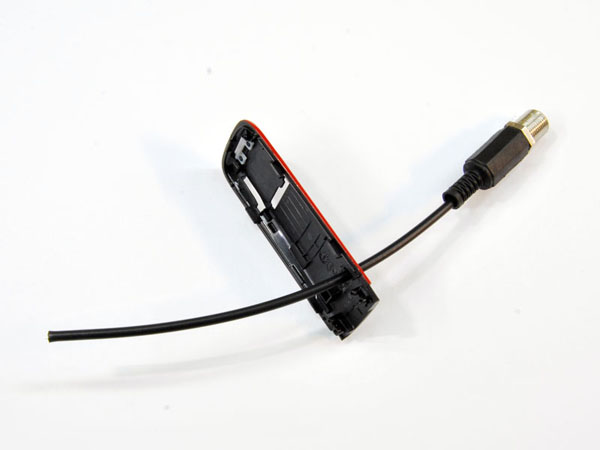
Solder the cable to the modem. We solder quickly, accurately and accurately, do not overheat the board. We solder the central core to the site left over from the internal antenna; braid solder to any place that is the ground and located as close as possible to the site with a soldered central residential.
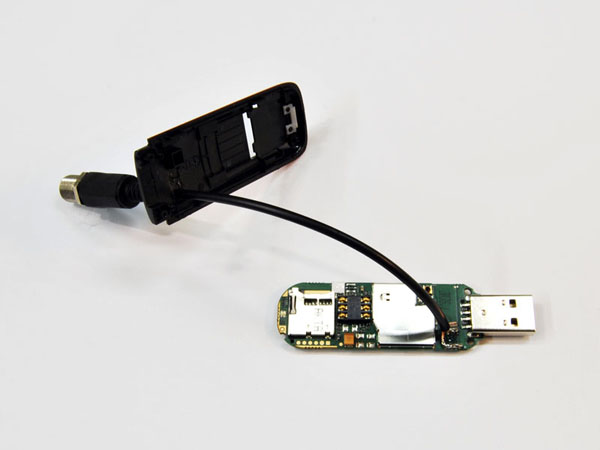


We collect the modem. Now the cable is sticking out of the modem and prevents the cover from closing to the end. Therefore, gently mill it.
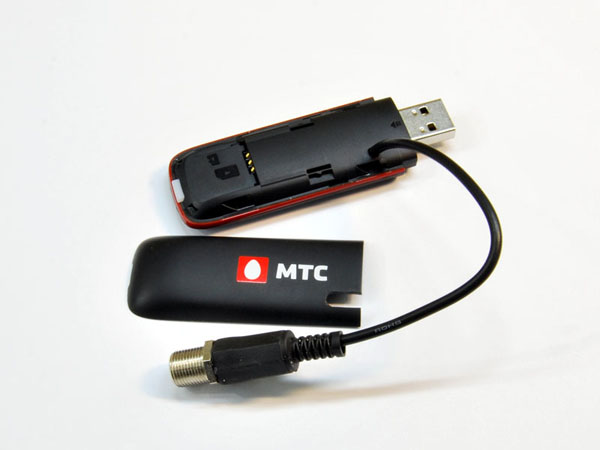

We make a cable assembly with a length of up to 15 meters and connect an external 3G antenna to the modem for frequencies 1900-2200 MHz with a gain of 14 dB.
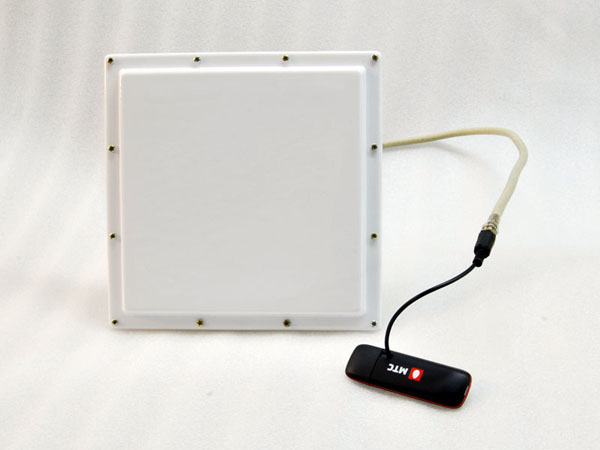
It was the turn to test this construction in action. For the test, the Huawei E171 modems from MTS and ZTE MF190 from Beeline were soldered. Two more of exactly the same modem were purchased - as standards, so that there was something to compare with.
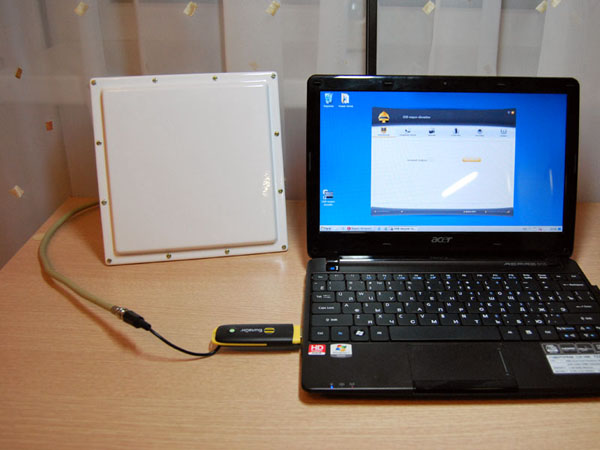

The purpose of the test was to estimate the speed of the 3G Internet in a soldered modem with an external antenna compared to a reference modem with a standard internal antenna. In no case have we figured out which of the operators is “better” or which model of the modem is “more correct”. We compared only the modem with an external antenna and the modem with a standard antenna.
Measurements were taken in a regular apartment, in a residential area. We measured the speed test, each measurement was done 10 times and then we found the average value.
Here are the results:
ZTE MF190 with a standard antenna (Beeline, 3G mode)
Soldered ZTE MF190 with external antenna (Beeline, 3G mode)
Huawei E171 with a standard antenna (MTS, EDGE mode)
Soldered Huawei E171 with external antenna (MTS, 3G mode)
3G from Beeline was caught on both ZTE modems, but for a modem with an external antenna, ping is better by 119 ms, the reception speed is 2.5 times higher, and the transmission speed is 4 times.
The Huawei modem from MTS with a standard internal 3G antenna was not caught at all, EDGE was caught only a couple of times, there was not even a speech about any speed test or loading of any site. But even more interesting - to catch the signal, it would seem, in a very hopeless case! And with an external antenna it succeeded: ping was equal to 310 ms, reception speed 0.47 Mbit / s, transfer speed 0.03 Mbps. And during the tests, we put the antenna on the window sill and sent it at random, just to the side of the street. It seems that if you install the antenna outside the window or on the roof, and if it is correctly pointed to the base station, the results would be much improved.
As a result, a soldered modem complete with an external antenna gives a speed gain of at least twice, and they can pull out the signal where it has never been. This is a real find for those to whom neither optics, nor even copper have yet performed.
Some modems have a special connector for connecting an external antenna. Cons of this method:
- it is necessary to find an adapter cable with a suitable connector specifically for this modem;
- on the connector there will be excess signal loss;
- the connector is very fragile, and a pair of inaccurate connections can break it.
Of the advantages of such a connector - only its presence.
Many models of modems do not have such a connector. Just in time for such a modem, we will connect an external antenna. To do this, the tools will require: a screwdriver, a soldering iron, a sharp knife. As well as the ability to solder or extra money on a new modem.
So, our patient is a 3G modem Huawei E171from MTS:

Carefully open the case and remove the modem from it. Here is its other side, (but it’s not interesting to us).

On the front side there are: a module for a memory card, contacts for a SIM card, a radio module under the cover, a connector, an internal antenna and a USB output.

Interestingly, this connector is not available without disassembling the case, that is, almost all owners of this modem do not even suspect about this connector. Let it remain in place, we do not need it and do not interfere at all. And the internal antenna bothers us:

The antenna is etched right on the board, and we need to turn it off. To do this, first bite the SMD capacitor, designed for resonant matching of the antenna. Then a small cutter, clamped into the drill, do propyl on the antenna, leaving only a small platform for the soldering of the cable. The cut is done shallowly, as the PCB is multi-layered. We call the tester, whether the “amputation” was successful and whether there is no short-circuit between the cable soldering area and the cut antenna. By the way, sometimes this site can have a short circuit to the ground - these are the architectural features of some modems. If we did not cut off the internal antenna, then after connecting the external antenna, the signal would be divided between them, a mismatch would have occurred and nothing would have happened.

I wonder if there is still a chance to return this modem under warranty?
It should be noted that in some modems the internal antenna is made in the form of a cap with radiating elements. This cap is easily torn off the board, so you don’t have to cut anything.
After “amputation”, we take a piece of coaxial cable RG174, resistance 50 Ohm, 15 cm long (no longer necessary, because there is a large signal loss on this cable), F-connector and “tulip” connector. You can find all this in the radio parts store.

With the "tulip" we twist the cap, throw the rest. We clean the cable.

We solder the core to the central terminal of the F connector, the braid on its ground, put the cap on the connector.

Carefully measure and drill a hole in one of the halves of the body. Thread the cable through this hole.

Solder the cable to the modem. We solder quickly, accurately and accurately, do not overheat the board. We solder the central core to the site left over from the internal antenna; braid solder to any place that is the ground and located as close as possible to the site with a soldered central residential.



We collect the modem. Now the cable is sticking out of the modem and prevents the cover from closing to the end. Therefore, gently mill it.


We make a cable assembly with a length of up to 15 meters and connect an external 3G antenna to the modem for frequencies 1900-2200 MHz with a gain of 14 dB.

It was the turn to test this construction in action. For the test, the Huawei E171 modems from MTS and ZTE MF190 from Beeline were soldered. Two more of exactly the same modem were purchased - as standards, so that there was something to compare with.


The purpose of the test was to estimate the speed of the 3G Internet in a soldered modem with an external antenna compared to a reference modem with a standard internal antenna. In no case have we figured out which of the operators is “better” or which model of the modem is “more correct”. We compared only the modem with an external antenna and the modem with a standard antenna.
Measurements were taken in a regular apartment, in a residential area. We measured the speed test, each measurement was done 10 times and then we found the average value.
Here are the results:
ZTE MF190 with a standard antenna (Beeline, 3G mode)
- Ping 218 ms
- Downlink 0.46 Mbps
- Uplink 0.16 Mbps
Soldered ZTE MF190 with external antenna (Beeline, 3G mode)
- Ping 99 ms
- Downlink 1.16 Mbps
- Uplink 0.66 Mbps
Huawei E171 with a standard antenna (MTS, EDGE mode)
- Ping was not
- Downlink 0 Mbps
- Uplink 0 Mbps
Soldered Huawei E171 with external antenna (MTS, 3G mode)
- Ping 310 ms
- Downlink 0.47 Mbps
- Uplink 0.03 Mbps
3G from Beeline was caught on both ZTE modems, but for a modem with an external antenna, ping is better by 119 ms, the reception speed is 2.5 times higher, and the transmission speed is 4 times.
The Huawei modem from MTS with a standard internal 3G antenna was not caught at all, EDGE was caught only a couple of times, there was not even a speech about any speed test or loading of any site. But even more interesting - to catch the signal, it would seem, in a very hopeless case! And with an external antenna it succeeded: ping was equal to 310 ms, reception speed 0.47 Mbit / s, transfer speed 0.03 Mbps. And during the tests, we put the antenna on the window sill and sent it at random, just to the side of the street. It seems that if you install the antenna outside the window or on the roof, and if it is correctly pointed to the base station, the results would be much improved.
As a result, a soldered modem complete with an external antenna gives a speed gain of at least twice, and they can pull out the signal where it has never been. This is a real find for those to whom neither optics, nor even copper have yet performed.
')
Source: https://habr.com/ru/post/137911/
All Articles